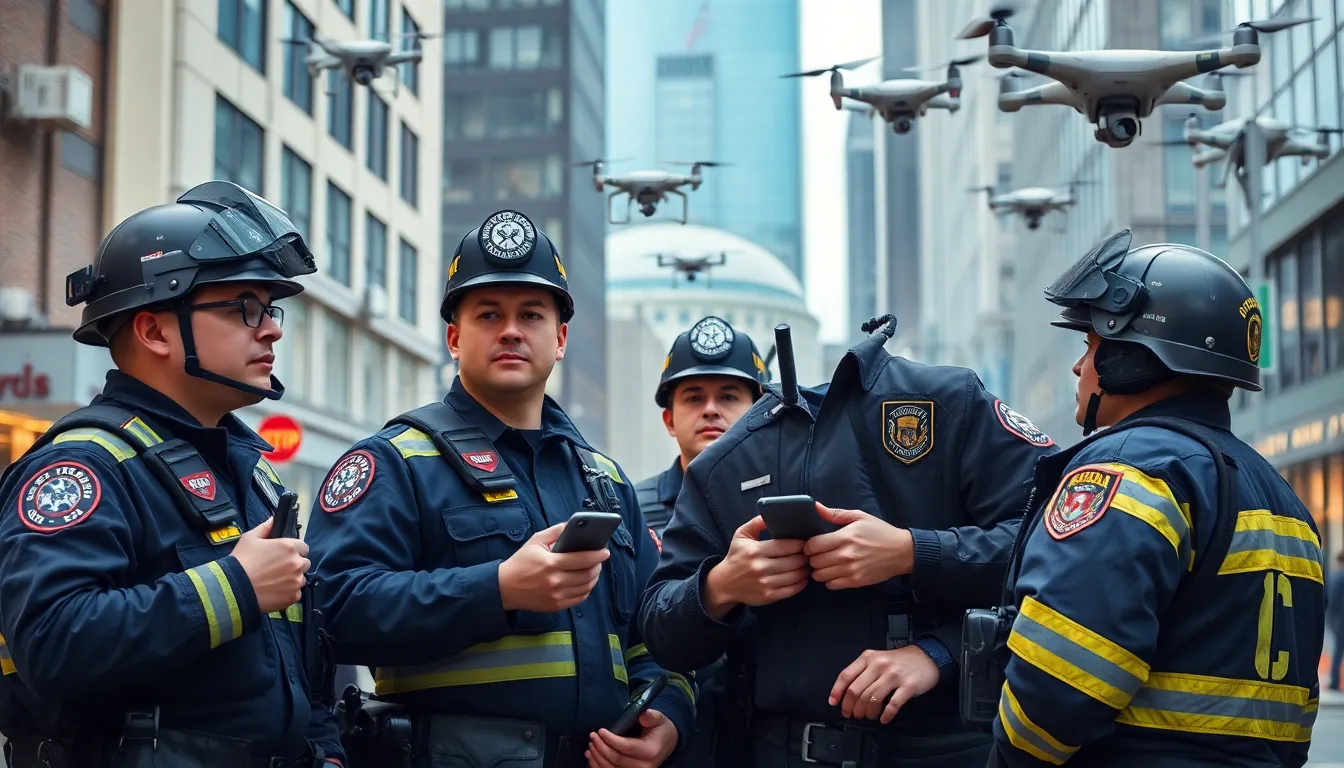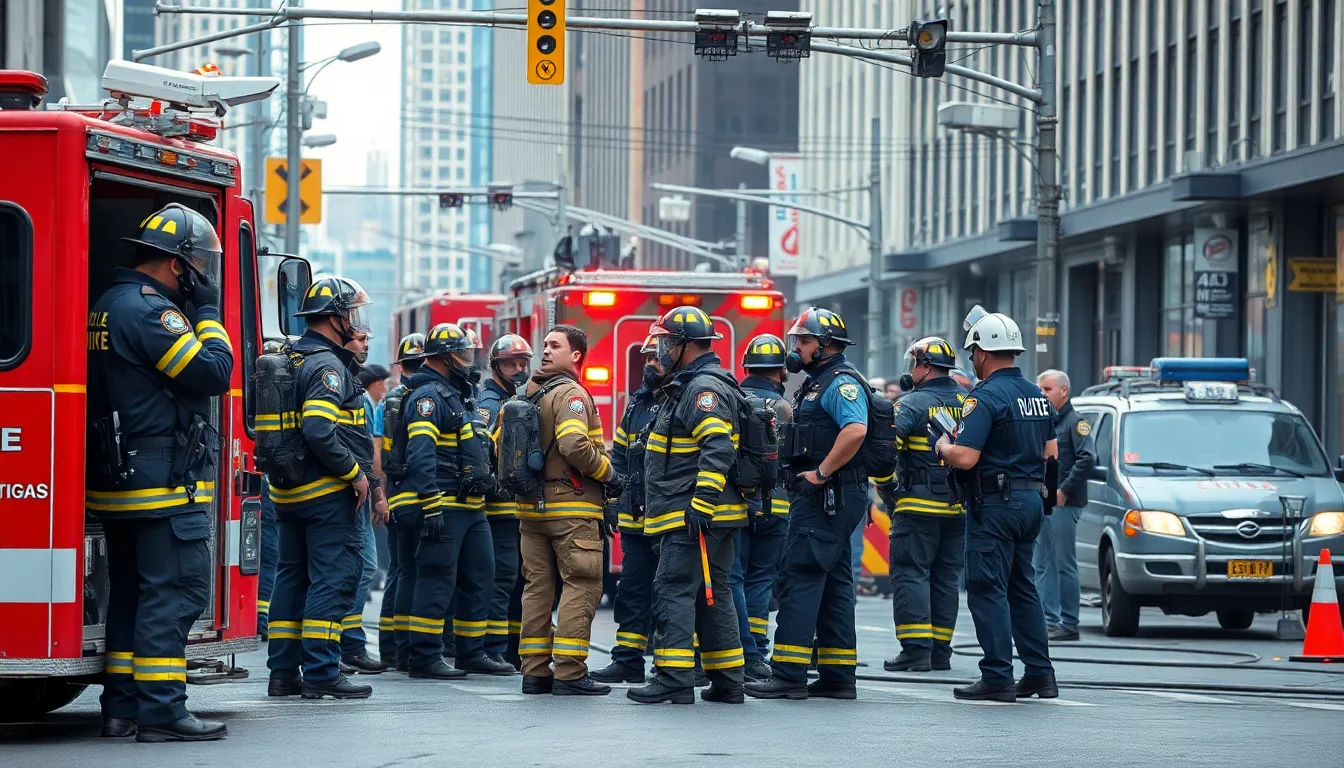As cities grow and evolve, so do the challenges they face in maintaining public safety. Innovative technology is stepping up to meet these demands, transforming how communities protect their citizens. From smart surveillance systems to advanced data analytics, public safety tech is reshaping the landscape of law enforcement and emergency response.
This surge in technological solutions not only enhances situational awareness but also fosters collaboration among agencies. By leveraging cutting-edge tools, cities can respond more effectively to emergencies and prevent crime before it happens. As the future unfolds, understanding these advancements becomes crucial for both leaders and citizens alike.
Table of Contents
ToggleOverview of Public Safety Tech
Public safety tech encompasses various innovative solutions aimed at safeguarding citizens and enhancing emergency responses. This technology applies to law enforcement, firefighting, emergency medical services (EMS), and disaster management.
Smart Surveillance Systems
Smart surveillance systems deploy advanced cameras and sensors to monitor public areas. These systems utilize artificial intelligence (AI) for real-time threat detection, increasing response times. They allow law enforcement to access data streams swiftly and make informed decisions based on live footage. Examples of such technologies include automatic license plate recognition (ALPR) and facial recognition systems.
Advanced Data Analytics
Advanced data analytics play a crucial role in public safety tech, processing vast amounts of information to identify trends and predict incidents. Law enforcement agencies employ predictive policing software to analyze crime patterns, enabling proactive measures. Analytics help in resource allocation during events, ensuring optimal deployment of personnel and equipment.
Communication Technologies
Communication technologies enhance collaboration among public safety agencies. Secure, interoperable radio systems facilitate seamless communication during emergencies. Additionally, mobile applications allow citizens to report incidents directly to law enforcement, promoting community involvement in safety measures.
Drones and Unmanned Aerial Vehicles (UAVs)
Drones and UAVs are transforming how public safety agencies respond to incidents. They provide aerial views of disaster scenarios, aiding in search and rescue operations. Equipped with thermal imaging and real-time data transmission devices, drones enhance situational awareness and improve response strategies.
Internet of Things (IoT) in Public Safety
The IoT integrates devices and sensors to create smarter urban environments. In public safety, IoT applications include connected streetlights that detect gunshots and environmental sensors that monitor air quality. These technologies enable quick responses to emergencies and foster safer, healthier communities.
Emergency Management Software
Emergency management software streamlines coordination during incidents. This software organizes resources, manages logistics, and tracks personnel deployment. By providing a centralized platform for data sharing and communication, it enhances response efficiency and clarity across agencies.
Each of these technologies contributes to a comprehensive approach to public safety. Understanding their capabilities equips leaders to make informed decisions, ultimately shaping safer urban environments for all residents.
Types of Public Safety Tech


Public safety tech encompasses various tools that enhance community well-being. Below are key categories of these technologies that contribute to safer urban environments.
Communication Technologies
Communication technologies facilitate real-time coordination among emergency services. Solutions like radio systems, mobile apps, and secure messaging platforms enhance connectivity during crises. Public alert systems like emergency notification services inform citizens about threats or emergencies instantly. Social media platforms also serve as vital channels for disseminating information quickly, helping agencies engage with the public and share updates effectively.
Surveillance Systems
Surveillance systems play a crucial role in monitoring urban environments. Smart surveillance cameras equipped with AI provide real-time threat detection and facial recognition capabilities. These systems enhance situational awareness for law enforcement and help deter criminal activity. Moreover, integrated video analytics enable automatic alerts for suspicious behaviors, supporting rapid response efforts. Drones equipped with cameras extend surveillance capabilities, offering aerial perspectives during events or emergencies.
Emergency Response Tools
Emergency response tools are essential for efficient incident management. Advanced software platforms streamline communication and coordination among responding agencies, ensuring effective resource allocation. Tools like geographic information systems (GIS) assist in mapping incidents and planning efficient routes for responders. Mobile applications allow citizens to report emergencies directly, enhancing community involvement in safety efforts. Additionally, automated emergency dispatch systems improve response times, significantly affecting outcomes during critical situations.
Benefits of Public Safety Tech
Public safety technology offers significant advantages that enhance urban environments. These advancements contribute to improved response times and foster greater community engagement.
Enhancing Response Times
Public safety tech significantly reduces response times for emergency services. Integrated communication systems expedite information sharing between agencies. Real-time data analytics enable quicker decision-making based on analyzed threats. Smart surveillance systems alert authorities to incidents as they occur, allowing faster mobilization of resources. Drones support on-scene assessment, providing visual data that facilitates timely interventions. Collectively, these tools streamline operations, ensuring that help reaches citizens promptly and efficiently.
Improving Community Engagement
Public safety technology strengthens the relationship between authorities and the community. Mobile applications foster direct communication, enabling residents to report incidents instantly. Transparency increases as agencies provide updates through public alert systems and social media. Community-oriented programs utilize data visualization tools that inform citizens about local safety metrics. Engaged citizens contribute to a supportive environment, enhancing overall public safety. The collaboration between officials and community members promotes trust, empowering individuals and fostering a sense of security within neighborhoods.
Challenges in Public Safety Tech
Public safety technology faces several challenges that can hinder its effectiveness. Two primary concerns involve privacy and implementation costs, which impact the adoption and success of these innovations.
Privacy Concerns
Privacy concerns arise from the increased use of surveillance systems and data collection methods. Citizens often worry about the potential for unwarranted monitoring and data misuse. Unregulated access to personal information can lead to distrust between communities and law enforcement. Compliance with privacy laws, like the General Data Protection Regulation (GDPR), presents additional challenges for public safety agencies. Implementing checks and balances ensures that technology serves to protect citizens without infringing on individual rights.
Implementation Costs
Implementation costs represent a significant barrier to adopting public safety technologies. Budget constraints often limit cities and agencies in their ability to invest in advanced systems. Initial expenditures for purchasing equipment, software, and training personnel can be substantial. Additionally, ongoing maintenance and upgrades contribute further to financial burdens. To mitigate these costs, agencies can explore partnerships with private tech firms or apply for government grants dedicated to enhancing public safety.
Future Trends in Public Safety Tech
Public safety technology continues to evolve, driven by advancements in AI, data analytics, and smart city solutions. These innovations contribute to more responsive and effective public safety strategies.
Integration with AI and Data Analytics
Integration with AI and data analytics enhances public safety operations significantly. AI algorithms analyze vast amounts of data, identifying patterns that predict potential incidents. These insights facilitate proactive policing and resource allocation. Real-time analytics permit quick decision-making, enabling authorities to respond swiftly to emergencies. For instance, predictive analytics models can assess crime risks in specific areas, guiding patrol placement and resource utilization. Organizations that harness these technologies report improved success rates and more efficient use of their assets.
Smart City Solutions
Smart city solutions play a crucial role in shaping the future of public safety. These systems utilize IoT devices to collect and analyze data from various city infrastructures. Sensors placed throughout urban areas provide critical insights into traffic patterns, environmental conditions, and public behavior. Advanced surveillance systems integrated within smart city frameworks enable continuous monitoring and rapid response to incidents. Additionally, smart lighting and emergency alert systems inform citizens in real-time during crises, enhancing community safety. The collaborative approach of smart city initiatives fosters partnerships between government agencies, tech companies, and citizens, effectively creating safer urban environments.
Public safety technology is transforming how cities approach safety and emergency response. By leveraging advanced tools like AI-driven surveillance and real-time data analytics, urban environments can become more secure and responsive. The collaboration between agencies and the community plays a vital role in this evolution, fostering trust and transparency.
While challenges like privacy concerns and implementation costs remain, the benefits of these technologies are undeniable. As cities continue to invest in innovative solutions, the future of public safety looks promising. Embracing these advancements will ultimately lead to safer communities where residents can thrive.



